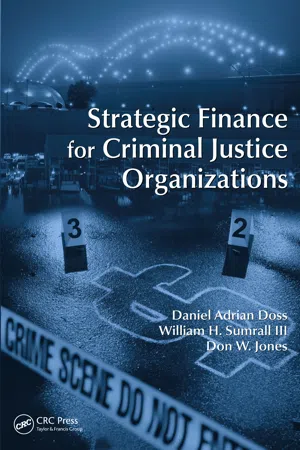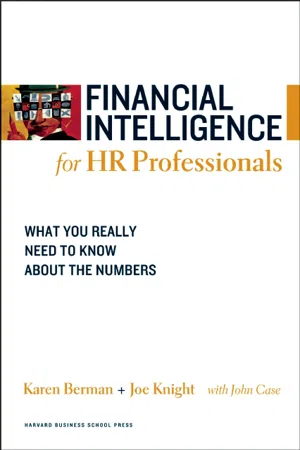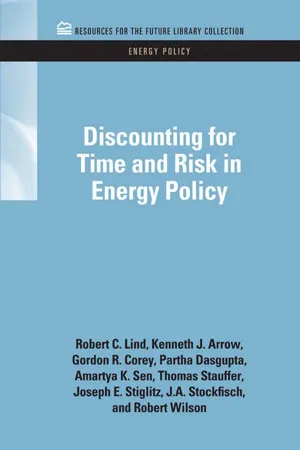Business
Rate of Return
Rate of return is a measure used to evaluate the efficiency of an investment. It calculates the gain or loss on an investment relative to the initial amount invested. It is expressed as a percentage and is a key metric for assessing the profitability of an investment.
Written by Perlego with AI-assistance
Related key terms
6 Key excerpts on "Rate of Return"
- Daniel Adrian Doss, William H. Sumrall III, Don W. Jones(Authors)
- 2017(Publication Date)
- Routledge(Publisher)
7
How Do We Rate? With the Internal Rate of Return
Government always finds a need for whatever money it gets.*President Ronald Reagan7.1 Objectives
The objectives of this chapter are to:• Understand the concept of rate • Understand the concept of internal Rate of Return • Understand how to make an internal Rate of Return financial decision7.2 Introduction
The methods of capital budgeting encompass perspectives of time, cash value, rate, and profitability potential. Examining projects from these perspectives involves the use of quantitative tools through which projects may be judged and selected as either acceptable or unacceptable. The preceding chapters introduced two capital budgeting methods, the payback time method and the net present value method, through which such decisions may be explored. Respectively, these methods involved perspectives of time and cash flow analysis.This chapter introduces another perspective of capital budgeting referred to as the internal Rate of Return (IRR). This perspective involves a consideration of rate involving the anticipated cash flows of potential capital investment initiatives. The basic concepts of rates were defined and explained in the preceding chapters. This chapter expands the conceptual discussions of the IRR and demonstrates the usefulness of rate comparisons among potential capital investments. (See Figure 7.1 .)The IRR is used among a variety of environments to evaluate potential capital investment initiatives. According to the City of Las Vegas, the use of the IRR method may be used to demonstrate the validity of requests for redevelopment funding.* From the perspective of building infrastructures, a 20% Rate of Return is expected regarding building strategies.†Figure 7.1 A goal of capital budgeting is to determine the highest and best use of organizational funding. Army Chief of Staff General George W. Casey, Jr., foreground, explains his four imperatives for getting the force back into “balance,” as Secretary of the Army John McHugh listens on Tuesday to the Senate Armed Services Committee about the Army’s budget for Fiscal Year 2011. (Photo by Alexandra Hemmerly-Brown. Courtesy of the U.S. Army, http://www.army.mil/media/109899- eBook - ePub
Maximizing Benefits from IT Project Management
From Requirements to Value Delivery
- Jose Lopez Soriano(Author)
- 2016(Publication Date)
- CRC Press(Publisher)
The interest rate is another macroeconomic variable that influences financial investment outcomes and warrants consideration. Interest rates represent the compensation that you can get for the money if deposited in a financial institution without taking risks or making investments with uncertain outcomes. Since an investment project will always be associated with some level of risk, however small, the outcome should still produce financial results that are greater than those achieved through mere financial deposits. Interest rates can also affect project investments in terms of paying back any monies borrowed or financial considerations given to perform the project. In particular, interest rates will fluctuate over time, so the interest rates applicable to the payback period need to be predicted and applied to calculations with some level of accuracy.Calculating the ROI
ROI is an original ratio of the financial world often used to measure and determine the financial benefits that will be realized from investments. When ROI is calculated for multiple potential investment opportunities, it allows those opportunities to be compared and contrasted as a means to select the opportunity that provides the greatest return on investment.In essence, the ROI calculation compares the net return on investment for the project against the investment required for performing that project. This reduces the overall financial yield obtained in a manner that represents the profit on each dollar invested. In this process of reduction of investment performance, some precautions that have been mentioned earlier should be taken, and they will be repeated in our discussion on ROI calculations as points of emphasis.The effects of inflation should be included in ROI calculations relative to the devaluation of income over time; between two equal investments, it will always be preferable to select the one whose yields are obtained earlier. For example, consider the opportunity to invest in two projects, each of which requires allocating the same amount of $400,000 to provide a return of $425,000. In these circumstances, we may not think about the timing or the effect of inflation. We might therefore be indifferent as to whether we should invest in one or the other as they both produce the same yield. However, if the first investment produces the result in 12 months, but the second requires 3 years to accomplish the same result, you will not need any special financial training to recognize that obtaining $25,000 in 1 year is a better deal than $25,000 in 3 years. In an inflationary market situation, with steady increases in the price of goods and services, we can buy more products and services with $25,000 in our investment account this year than we can next year. - eBook - ePub
Financial Intelligence for HR Professionals
What You Really Need to Know About the Numbers
- Karen Berman, Joe Knight(Authors)
- 2008(Publication Date)
- Harvard Business Review Press(Publisher)
You are assuming your investment will pay off a certain amount in the future, and you want to know how much is worth investing now to get that amount at a future date. So your decision about the interest or discount rate is essentially a decision about what interest rate you need to make the investment at all. You might not invest $100,000 now to get $102,000 in a year (a 2 percent rate), but you might very well invest $100,000 now to get $120,000 in a year (a 20 percent rate). Different companies set the bar, or “hurdle,” at different points, and they typically set it higher for riskier projects than for less risky ones. The rate that they require before they will make an investment is called the required Rate of Return, or the “hurdle rate.” There is always some judgment involved in establishing a hurdle rate, but the judgment isn’t wholly arbitrary. One factor is the opportunity cost involved. The company has only so much cash, and it has to make judgments about how best to use its funds. That 2 percent return is unattractive because the company could do better just by buying a treasury bill, which might pay 4 percent or 5 percent with almost no risk. The 20 percent return may well be attractive—it’s hard to make 20 percent on most investments—but it obviously depends on how risky the venture is. A second factor is the company’s own cost of capital. If it borrows money, it has to pay interest. If it uses shareholders’ capital, the shareholders expect a return. The proposed investment has to add enough value to the company that debtholders can be repaid and shareholders kept happy. An investment that returns less than the company’s cost of capital won’t meet these two objectives—so the required Rate of Return should always be higher than the cost of capital. Opportunity Cost In everyday language, this phrase denotes what you had to give up to follow a certain course of action - eBook - ePub
- Robert Irons(Author)
- 2019(Publication Date)
- Routledge(Publisher)
3 Risk and ReturnBusinesses constantly face risks, some recurring (like the risk of a competitor designing a newer, better product), others new and different (like the risk of an economic recession) and all seemingly never-ending. Risks come in many different forms and different levels of severity. Part of being a good manager is being able to understand the nature of the risks the firm faces and determine the return necessary to make the risks worth bearing.The last sentence above implies a relationship between risk and return, and that relationship is important for you to understand. That relationship is stated clearly in our second fundamental principle (FP2), which identifies the positive nature of the relationship between risk and return. This relationship is so important that it is usually a mistake to discuss an investment’s return without also discussing its risk. In this chapter, we will discuss the different types of risk firms (and investors) face, how these risks are measured and how they compare to returns. We will also discuss how to calculate returns over a holding period, as well as how to calculate mean annual returns over an extended period of time.The Fundamental Principles in Action
FP2 states that there is a direct (or positive) relationship between perceived risk and required return. This principle is clearly seen when calculating expected returns using the Security Market Line. PR3 examines the inverse relationship between value and the risk, while PR1 describes the inverse relationship between value and the discount rate. These two precepts are linked by the direct relationship between risk and return, since the return to shareholders is used as the discount rate for valuing the firm’s common shares. - eBook - ePub
- Robert C. Lind, Kenneth J. Arrow, Gordon R. Corey, Partha Dasgupta, Amartya K. Sen, Thomas Stauffer, Joseph E. Stiglitz, J.A. Stockfisch(Authors)
- 2013(Publication Date)
- RFF Press(Publisher)
If there is a difference between the two rates, a method must be worked out for dealing with the problem of possible misallocation of resources. Marglin (1963) and Feldstein (1964) have presented two such methods, both of which require information about the Rate of Return in the private sector. In other words, to employ a social discount rate as a feature of the government’s resource-allocation apparatus requires information about the profitability of private investment that will be displaced or stimulated by the government’s investment behavior. This is the second reason that a measure of the prevailing private sector Rate of Return is relevant to discussion of the social rate of discount.However, the idea of “the” Rate of Return on private investment is itself an abstraction. The concept follows from equilibrium theory, in which rates of return obtainable from investment in many activities are equalized. Of course, during any given period for which empirical measures are taken, such equality will not be found. This condition is inherent in real economies in which preferences, technology, and other conditions change. Moreover, taxes—particularly property and corporation profits taxes—drive a wedge between physical asset earnings and the yields of private ownership claims. Rate-of-return measures thus will be biased downward. These same measures, even when adjusted for taxes, may still have shortcomings. Financial information, at best, may provide insight only into average rates of return. Yet it is the marginal Rate of Return that is relevant to resource allocation. Thus, the question arises whether and the extent to which some sort of average rate can serve as a measure of its marginal counterpart. To address this question requires a theoretical model.The Theory of the Rate of Return on Private Investment: A Neoclassical Static Model The ModelBy social Rate of Return on private investment, I mean a measure of such concepts as “the marginal productivity of capital,” “the marginal efficiency of investment,” “the marginal Rate of Return over cost,” and so on. These concepts are adjuncts of capital theory and, as such, are both ambiguous and controversial. This condition requires that any particular version of the Rate of Return be specified carefully. This section attempts to lay the comparative static foundation of capital theory. - eBook - ePub
- Frank Harris, Ronald McCaffer, Francis Edum-Fotwe(Authors)
- 2013(Publication Date)
- Wiley-Blackwell(Publisher)
The methods of DCF yield or net PW have largely replaced other methods of project evaluation or project selection. Among the other methods that exist are payback and average annual Rate of Return.Payback Period
This involves calculating how long it takes for a project to repay its original invested capital. The shorter the payback period, the greater is the likelihood that the project will be profitable. Projects 1 and 2 below are examples of projects with payback periods of 4 years and 2.67 years respectively, therefore, Project 2 is to be preferred to Project 1. The weakness in the method is that it does not take account of the cash flows that occur after the payback period.Example – Criterion rate 15%Average Annual Rate of Return
This method involves calculating the average return and expressing it as a percentage of the invested capital. For Project 1 above, the average annual return iswhich is 27.5 per cent of £8000. Therefore, the average annual Rate of Return is 27.5 per cent. The weakness of this method is that it does not discriminate between the timings of the cash flows. This is illustrated by the fact that Project 2 above also has an average annual Rate of Return of 27.5 per cent; although it is already known and simple inspection will show that Project 2 is clearly the more profitable project because of the timings of the cash flows. The average annual Rate of Return should only be used in conjunction with other more discriminating methods of evaluation.Inflation
So far, it has been assumed that the forecasts of future costs and revenues have been at today’s prices. Clearly, it is easier to forecast at today’s prices since this removes at least one more variable from the forecast, although it also brings into question whether this is a valid approach. However, the effect of inflation can be taken into account when undertaking PW and yield calculations.
Learn about this page
Index pages curate the most relevant extracts from our library of academic textbooks. They’ve been created using an in-house natural language model (NLM), each adding context and meaning to key research topics.





